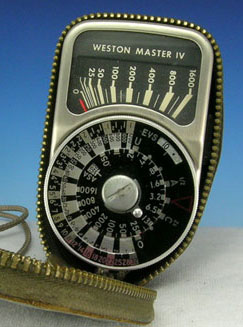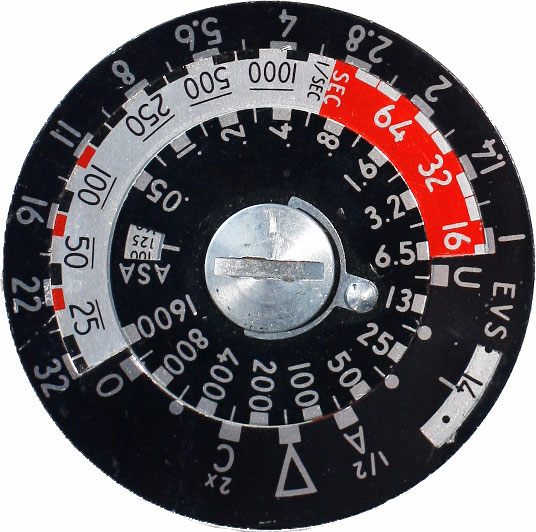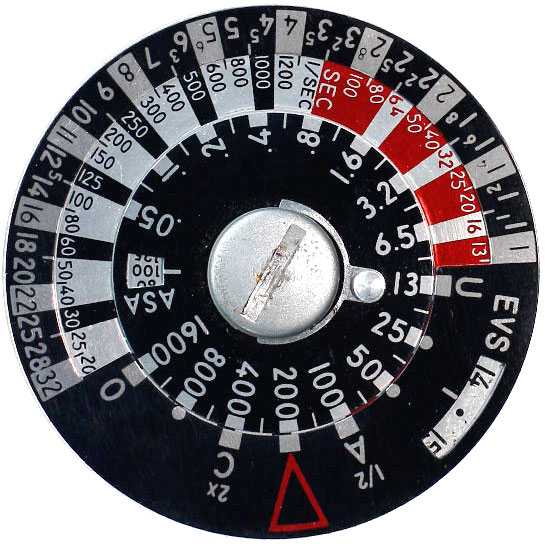
|
  Maker: Sangamo-Weston Model: Master IV (Model 745) Circa: 1960 - 1963 Price (new): $30 Cell type: Selenium Measure type: Reflecting/Averaging (3D incident available as accessory) Modern Photography Review: July 1960 |
|
The IV's were manufactured in the UK and imported into the US. This is the last of the Masters to feature the white-on-black meter face. After that they would be black on bare metal. According the test report in Modern Photography magazine (July 1960), one of the differences between this and the Master III is that this one has an extra stop of sensitivity at the low end—it could successfuly read ½ candle/square-foot. Despite the redesign, there's only one major new feature to this meter: the lock switch on the side. If you hold it properly in your right hand, the switch sits right under your thumb. Ideally you're supposed to leave it locked, then unlock it for your reading and then lock it again. It's partly convenience—you can aim the meter in a direction that's not necessarily easy to read, lock the reading and then look at it comfortably (which becomes very important if you're making incident readings). But it also keeps the meter mechanism from bouncing around during use; I think that's really why they added it. Of course if you're left handed, you're screwed. Personally I think this is the high-water mark for the calculator dial. Weston changed it every time; this is the one I find the easiest to read and use. The previous ones had smaller numbers, and every year I get older I appreciate clearer markings. The later models had black on bare-metal markings, and I think they're ugly and harder to read. Peter de Waal sent me an email pointing out that there are actually two versions of this meter. He writes:
I also have three copies of this meter. Two of them have serial numbers beginning with V, and the third has a serial number beginning with Y. I can't corroborate the rest of Mr. de Waal's observations because I don't want to disassemble them; but he's absolutely right about the calculator dials. I've photographed them and included them both below (click on each to get a larger size). The V copy is on the left, the Y copy is on the right. The big difference is that the V copy is calibrated only in whole stops, whereas the Y copy i calibrated in 1/3rd stops, both on the film speed (outermost) and shutter speed (middle) rings. The aperture ring (inside-most) is calibrated in full stops on both. Personally, I prefer the V model (left) with full-stops, because it's easier to read. If you notice, it still has the same hash-marks so you can still read it in 1/3rd stops, they're just not called out directly. Reading meter dials was one of the things that finally convinced me to buy bifocals, because I just couldn't read them anymore without a magnifying glass. If you want to see what a Master IV looks like inside, check out the autopsy. Also see Sekonic's L-104 Sekonic-Master. |
|
©opyright by James Ollinger. All Rights Reserved.
Company names and models are registered trademarks of their respective owners
and are not affiliated with this website in any way.

-sm.jpg)

